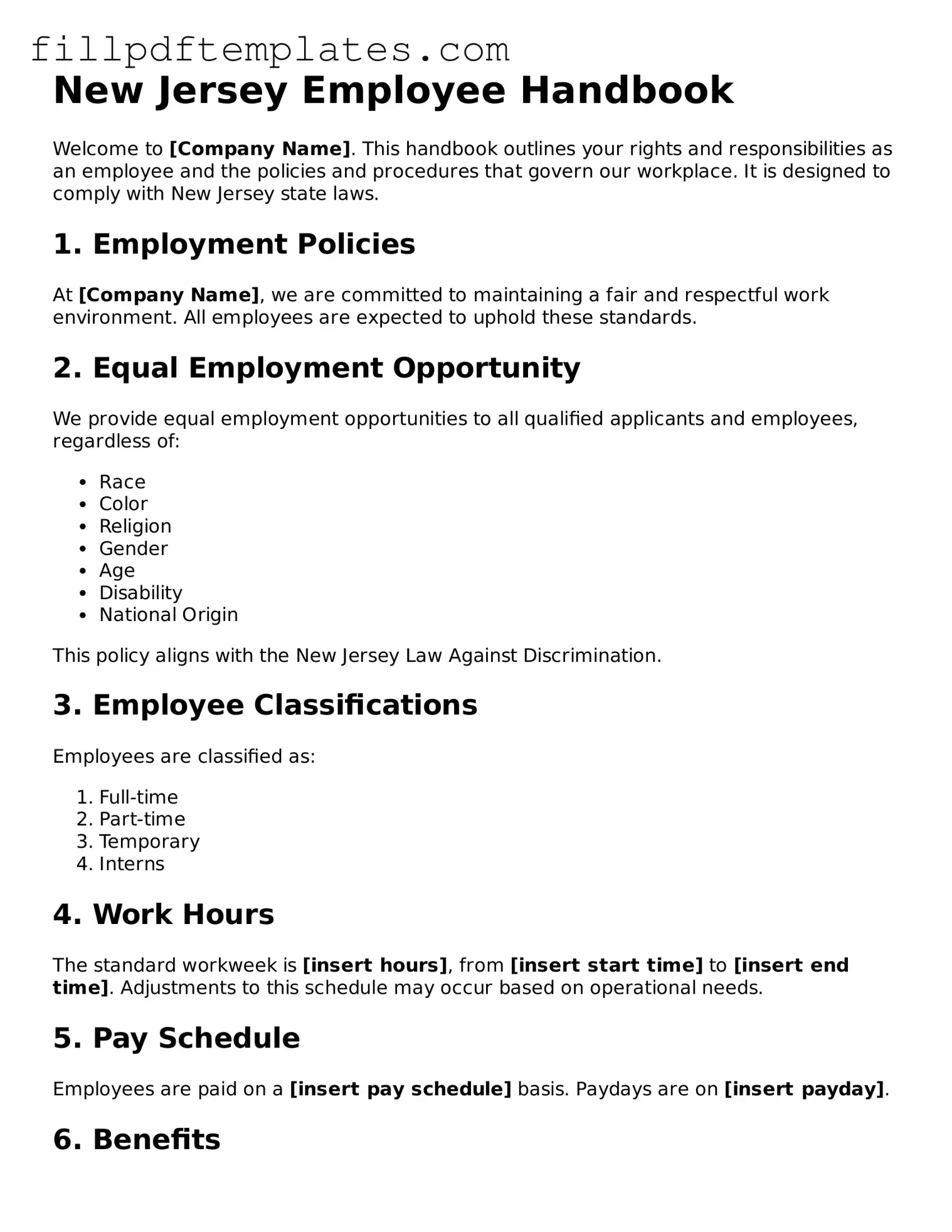New Jersey Employee Handbook
Welcome to [Company Name]. This handbook outlines your rights and responsibilities as an employee and the policies and procedures that govern our workplace. It is designed to comply with New Jersey state laws.
1. Employment Policies
At [Company Name], we are committed to maintaining a fair and respectful work environment. All employees are expected to uphold these standards.
2. Equal Employment Opportunity
We provide equal employment opportunities to all qualified applicants and employees, regardless of:
- Race
- Color
- Religion
- Gender
- Age
- Disability
- National Origin
This policy aligns with the New Jersey Law Against Discrimination.
3. Employee Classifications
Employees are classified as:
- Full-time
- Part-time
- Temporary
- Interns
4. Work Hours
The standard workweek is [insert hours], from [insert start time] to [insert end time]. Adjustments to this schedule may occur based on operational needs.
5. Pay Schedule
Employees are paid on a [insert pay schedule] basis. Paydays are on [insert payday].
6. Benefits
Our benefits package includes:
- Health Insurance
- Retirement Plan
- Paid Time Off
- Sick Leave
- Holidays
Eligibility for benefits begins on [insert eligibility date].
7. Employee Conduct
All employees are expected to conduct themselves in a professional manner. Violations of our conduct policy may result in disciplinary action.
8. Safety Policy
We prioritize safety in the workplace. All employees must adhere to safety protocols and report any unsafe conditions immediately.
9. Acknowledgment of Receipt
By signing below, you acknowledge that you have received and understood the Employee Handbook:
Employee Name: _____________________
Date: _____________________
10. Contact Information
If you have questions regarding this handbook, please contact:
[HR Contact Name]
[Company Name]
[Phone Number]
[Email Address]
